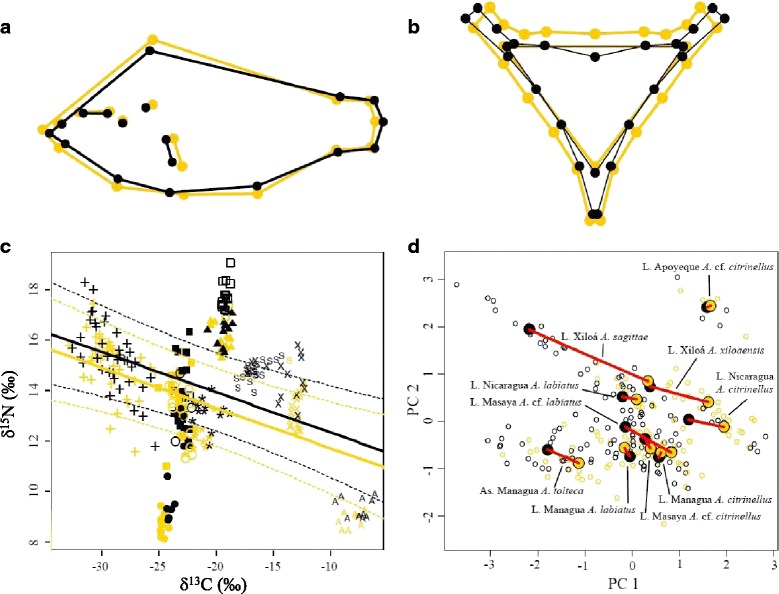Fig. 2.

Ecological differentiation between Midas cichlid color morphs. a Body shape differs between gold and dark morphs (n = 1,177) when assessing the entire species complex (scale factor = 10). Gold morphs were deeper-bodied, had a larger head and a longer pectoral fin base, compared to dark morphs. b Lower pharyngeal jaw shape differs between gold morph and dark morph (scale factor = 10) (n = 465). Gold morphs tend to have a more robust lower pharyngeal jaw shape. c There is a systematic difference in stable isotope signatures of δ15N between color morphs across the ten populations (n = 298 individuals) suggesting long-term diet differentiation between morphs. Fitted regression lines of the linear mixed effects model are indicated by solid lines (dotted lines indicate the 95 % credible interval) for both color morph groups. Gold morphs fed at a relatively lower trophic level (δ15N) than dark morphs, independent of the population and while accounting for δ13C. Symbols indicate the groups as follows: plus sign As. Managua, A. tolteca; filled square L. Masaya, A. cf. citrinellus; O L. Masaya, A. cf. labiatus; filled circle L. Nicaragua, A. citrinellus; asterisk L. Nicaragua, A. labiatus; filled triangle L. Managua, A. citrinellus; empty square L. Managua, A. labiatus; S L. Xiloá, A. sagittae; x L. Xiloá, A. xiloaensis; A L. Apoyeque, A. cf. citrinellus). d Phenotypic trajectory analysis of combined trophic and eco-morphological traits (body depth index [BDI], lower pharyngeal jaw [LPJ] weight, and stable isotope ratios of δ15N and δ13C; n = 232) demonstrates parallel evolution of many gold-dark pairs across replicate populations. Most vectors of phenotypic difference (red lines) between the centroids of gold and dark morphs are parallel in orientation while being substantially different in length
